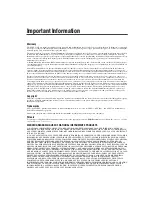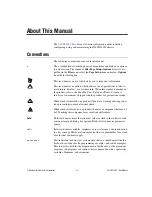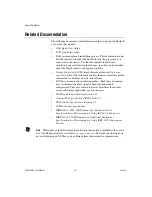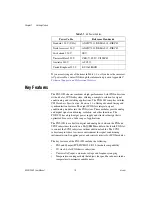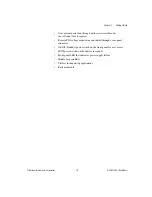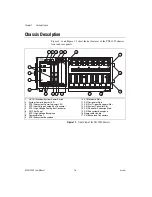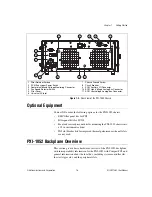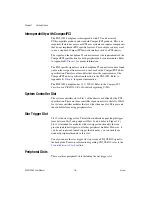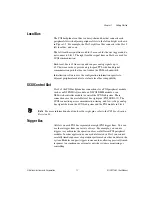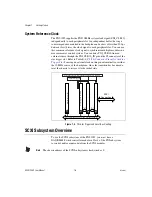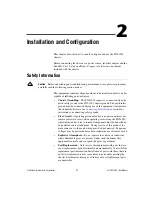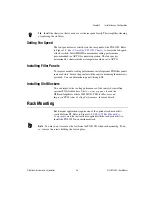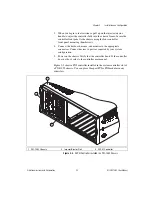
Chapter 1
Getting Started
1-6
ni.com
Interoperability with CompactPCI
The PXI-1052 backplane is interoperable with 5 V and universal
PXI-compatible products and standard CompactPCI products. This is an
important feature because some PXI user systems can require components
that do not implement PXI-specific features. For example, you may want
to use a standard CompactPCI network interface card in a PXI chassis.
The signals on the backplane P1 connectors meet the requirements of the
CompactPCI specification for both peripheral and system modules. Refer
to Appendix B,
, for pinout information.
The PXI-specific signals are on the backplane P2 connectors and are found
only on those signal lines reserved or not used in the CompactPCI 64-bit
specification. Therefore, all modules that meet the requirements of the
CompactPCI 64-bit specification function in the PXI-1052. Refer to
Appendix B,
, for pinout information.
The PXI-1052 backplane has +5 V V(I/O). Refer to the
CompactPCI
Specification PICMG 2.0 R3.0
for details regarding V(I/O).
System Controller Slot
The system controller slot is Slot 1 of the chassis as defined by the PXI
specification. There are three controller expansion slots to the left of Slot 1
for system controller modules that are wider than one slot. This prevents
the controller from using peripheral slots.
Star Trigger Slot
Slot 2 is the star trigger slot. This slot has dedicated equal-length trigger
lines between Slot 2 and peripheral Slots 3 and 4 (refer to Figure 1-3).
Slot 2 is intended for modules with star trigger functionality that can
provide individual triggers to all other peripheral modules. However, if
you do not require advanced trigger functionality, you can install any
standard peripheral module in this slot.
You also can use the star trigger slot to provide a PXI_CLK10 signal to
the backplane. For more information regarding PXI_CLK10, refer to the
section.
Peripheral Slots
There are three peripheral slots including the star trigger slot.



